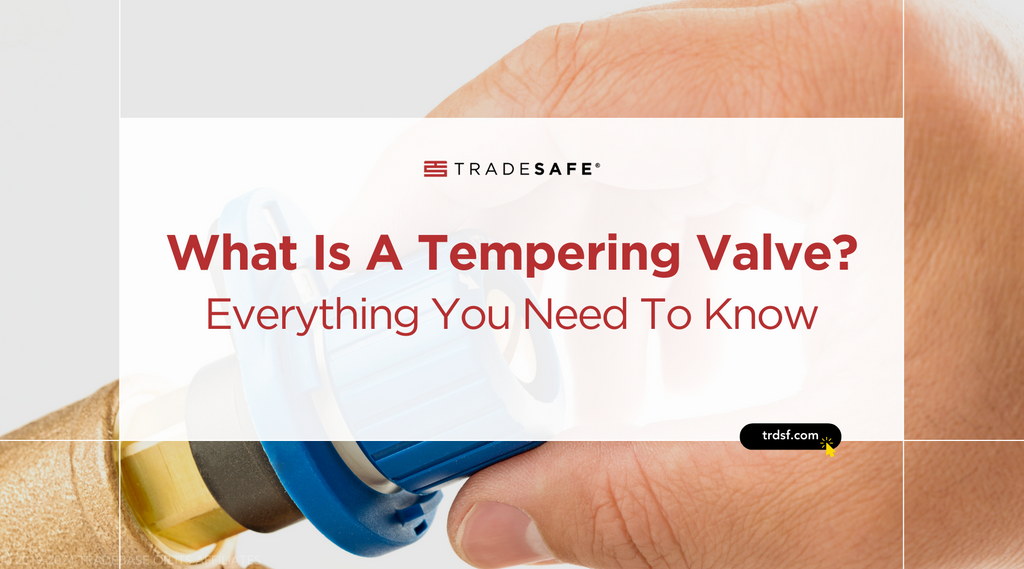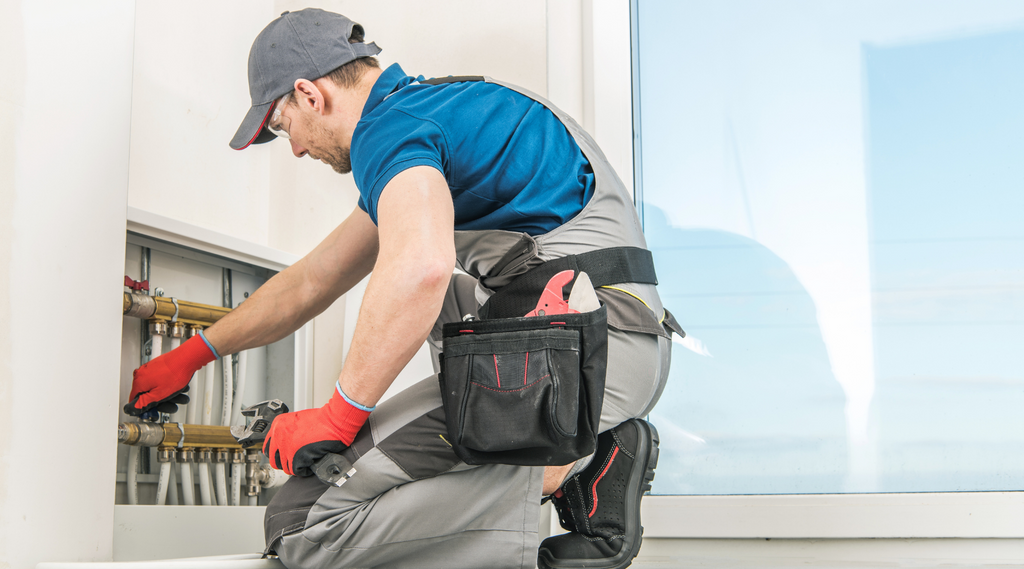
What Is A Tempering Valve?
A tempering valve is a device that blends hot and cold water to ensure a safe and consistent temperature output. This hot water tempering valve prevents scalding by controlling the temperature of the water leaving the tap or shower. Here are three benefits of using a tempering valve:
- Safety: It reduces the risk of burns from overly hot water.
- Consistency: Delivers water at a steady temperature, enhancing comfort.
- Energy efficiency: Prevents overheating of water, saving energy costs.
Tempering valves are essential in various settings but are particularly vital in places where safety is crucial. For example, they are used in emergency eye wash stations and safety showers to ensure that the water is at a safe temperature to prevent further injury during an emergency. These valves are a critical component in maintaining the right balance of hot and cold water, making them an integral part of any hot water system, including those in residential and industrial buildings.
Tempering valves are used in various settings such as:
- Residential homes: Ensures safe water temperatures in showers and faucets to prevent scalding accidents.
- Schools: Provides consistent and safe hot water for handwashing and sanitation, reducing the risk of burns.
- Hospitals and healthcare facilities: Maintains precise water temperatures for patient care and hygiene, crucial for patient safety.
- Commercial kitchens: Controls water temperature for cleaning and food preparation processes, ensuring health and safety compliance.
- Industrial plants: Used in manufacturing processes where controlled water temperature is essential for product quality and safety.
In this article, we will explore everything about tempering valves, from their types to installation and maintenance. Understand the role of a mixing valve water heater and how these water heater valves contribute to a secure and efficient hot water system.
Different Types of Tempering Valve
Tempering valves come in various types, each designed for specific applications and identified by the color of their cap. These valves are crucial in managing the water temperature in systems like mixing valve water heaters and other hot water valves.
Orange Cap Tempering Valve: This type of tempering valve is designed for high-temperature applications. It's often used in commercial settings where a higher water temperature is necessary, such as in industrial kitchens or laundries.
Green Cap Tempering Valve: Ideal for residential use, the green cap valve is used in home water heater valves. It ensures that the water temperature is safe for everyday activities like bathing and washing dishes, preventing scalding.
Blue Cap Tempering Valve: This valve is tailored for medical or laboratory settings, where precise temperature control is critical. The blue cap valve ensures that the water temperature remains consistent and safe for sensitive environments.
Black Cap Tempering Valve: Designed for heavy-duty use, the black cap valve is suitable for industrial sites. It can handle larger volumes of water, making it perfect for factories or plants where extensive hot water tempering valve systems are in place.
Each type of tempering valve serves a unique purpose, ensuring safety and efficiency in controlling water temperature across different settings.

How Does The Tempering Valve Work
A tempering valve is a critical component in managing water temperature within a plumbing system. It functions by mixing hot and cold water to a pre-set temperature before it reaches your tap or shower. The process starts with the hot water valve releasing hot water from the heater, while a separate valve introduces cold water. Inside the tempering valve, these two streams of water merge. The valve adjusts the flow of hot and cold water to achieve the desired temperature. For instance, if the incoming water is too hot, the valve will allow more cold water to mix in, and vice versa.
Sensors within the hot water tempering valve continuously monitor the temperature of the mixed water. If the water temperature deviates from the set point, the valve automatically adjusts, ensuring consistent water temperature output. This dynamic adjustment is what makes the tempering valve so effective in maintaining the safety and comfort of hot water usage in homes and buildings.
In addition to explaining how a tempering valve works, it's important to understand its components and functions:
- Thermostatic Element: This is the core of the tempering valve, responsible for sensing the temperature of the mixed water and adjusting the flow of hot and cold water to maintain the set temperature.
- Hot Water Inlet: This component allows hot water from the water heater valves to enter the valve.
- Cold Water Inlet: Similar to the hot water inlet, this allows cold water to enter the valve for mixing with the hot water to achieve the desired temperature.
- Mixed Water Outlet: This is where the tempered water, which is a mixture of hot and cold water at the set temperature, exits the valve.
- Adjustment Spindle or Knob: This part allows for manual adjustment of the mixing ratio of hot and cold water, enabling the user to set the desired output temperature.
These components work together to ensure that the hot water tempering valve delivers water at a consistent and safe temperature, preventing scalding and ensuring user comfort.
How To Install Tempering Valve
Installing a tempering valve is a crucial step in ensuring your hot water system operates safely and efficiently. Here’s a general guide to help you understand the process, though it’s always best to hire a professional for actual installation.
- Turn off the Water: Before starting, shut off the main hot water valve that is usually near the water meter to prevent water flow during installation.
- Gather Tools: Prepare your tools, including a pipe cutter, wrench set, and screwdriver.
- Access the Pipes: Locate the hot and cold water lines where the tempering valve will be installed, usually near the water heater valves.
- Prepare the Pipes: Use the pipe cutter to fit the valve and clean the ends for a secure connection.
- Install the Valve: Attach the tempering valve to the hot and cold water lines, ensuring it’s correctly oriented with the hot and cold inlets.
- Secure the Connections: Use the wrench to tighten all fittings to prevent leaks and ensure a stable setup.
- Test the System: Turn the water back on and check for any leaks around the hot water tempering valve.
Some safety precautions when installing tempering valves:
- Ensure the power to the water heater valves and main water supply is turned off before starting.
- Wear protective gear, like gloves and eyewear, to prevent injuries.
- Double-check the tempering valve orientation; the hot and cold inlets should be correctly aligned with the corresponding pipes.
- Carefully measure and cut pipes to avoid leaks and ensure a snug fit.
How To Adjust Tempering Valve
Adjusting the tempering valve is necessary to set the desired water temperature output:
- Locate the Adjustment Point: Find the adjustment knob or screw on the valve.
- Modify Temperature: Turn the knob or screw to adjust the mix of hot and cold water. Increase hot water to raise the temperature, or increase cold water to lower it.
- Test and Fine-tune: After adjusting, test the water temperature and make further adjustments as needed to achieve the perfect balance.
These steps provide a general guide to the installation and adjustment of a tempering valve. It’s advisable to contact a professional plumber to ensure proper installation and adjustment, as incorrect handling can lead to system malfunctions or safety hazards.

Best Practices For Tempering Valve Maintenance
Maintaining a tempering valve is key to ensuring long-term safety and efficiency in your hot water system. Here are five best practices to keep your hot water tempering valve in top condition:
Regular Inspection: Check the tempering valve every six months for signs of wear or damage. Inspecting can identify issues before they lead to major problems, ensuring the valve operates correctly.
Cleaning Sediments: Over time, sediments can build up in the valve, affecting its performance. Regularly clean the hot water valve and tempering valve to prevent blockages and maintain optimal function.
Temperature Monitoring: Regularly monitor the water temperature to ensure the tempering valve is accurately mixing hot and cold water. If the temperature fluctuates significantly, it may indicate that the valve needs adjustment or replacement.
Professional Servicing: Have a qualified technician service the tempering valve annually. Professional servicing can detect complex issues and ensure that the valve and the entire hot water system are working efficiently.
Replacement of Parts: Replace worn or damaged parts of the hot water tempering valve as needed. Using genuine parts for replacement ensures the valve continues to function safely and effectively.
Related Standards
In the United States, tempering valves are regulated by the American Society Of Sanitary Engineering (ASSE), an ANSI-accredited standards developer and product certification body with members representing various disciplines of the plumbing and mechanical industries.
ASSE 1016: This standard covers performance requirements for automatic compensating valves used in individual shower and tub/shower combinations. It ensures that these valves can adequately mix hot and cold water to maintain a safe and comfortable temperature, reducing the risk of scalding. ASSE 1016 emphasizes the need for tempering valves to respond quickly to changes in water temperature to prevent sudden bursts of hot or cold water.
ASSE 1070: This standard sets safety criteria for tempering valves used at sinks, lavatories, and bathtubs, specifying the range of outlet water temperatures to minimize the risk of scalding. ASSE 1070 is crucial for maintaining a consistent water temperature, ensuring that hot water tempering valves provide a stable and safe temperature, especially in environments like hospitals and schools.
ASSE 1069: This standard applies to stationary and fixed water heater valves and mixing valves that are used in recirculating systems. It ensures that these valves can properly maintain the desired water temperatures throughout the system, contributing to overall safety and efficiency in larger hot water systems.
These standards demonstrate the importance of having properly functioning tempering valves to ensure the safe and reliable operation of hot water systems. They outline the performance criteria that these valves must meet to protect users from potential hazards associated with varying water temperatures.
FAQs on Tempering Valve
What does a tempering valve do?
A tempering valve mixes hot and cold water to deliver water at a safe, controlled temperature, reducing the risk of scalding from hot water taps.
Can I change the tempering valve myself?
While it is possible to change a tempering valve yourself if you have plumbing experience, it's generally recommended to hire a professional to ensure proper installation and function.
Do you need a tempering valve on a hot water system?
Yes, a tempering valve is necessary in a hot water system to prevent scalding by controlling the temperature of the water coming out of your taps.
What is the difference between a tempering valve and a mixing valve?
A tempering valve is a type of mixing valve but is specifically designed to mix hot and cold water to a preset temperature. Mixing valves, in general, can serve various purposes, including controlling water temperature in heating systems.
What happens when a tempering valve fails?
If a tempering valve fails, it can result in water being too hot or too cold, leading to potential scalding hazards or discomfort during use.
